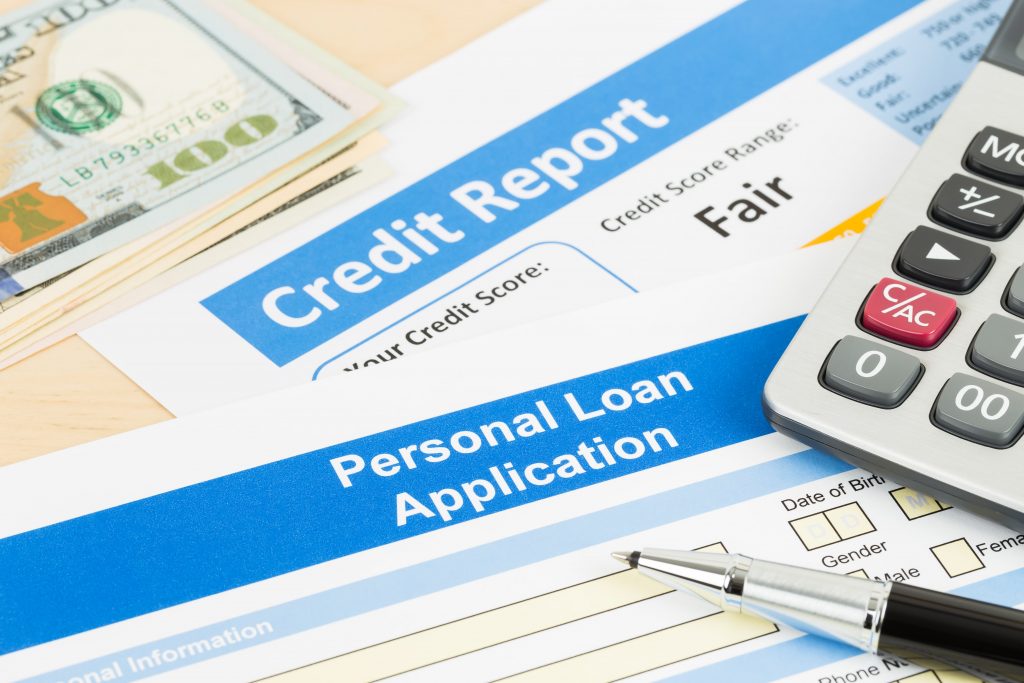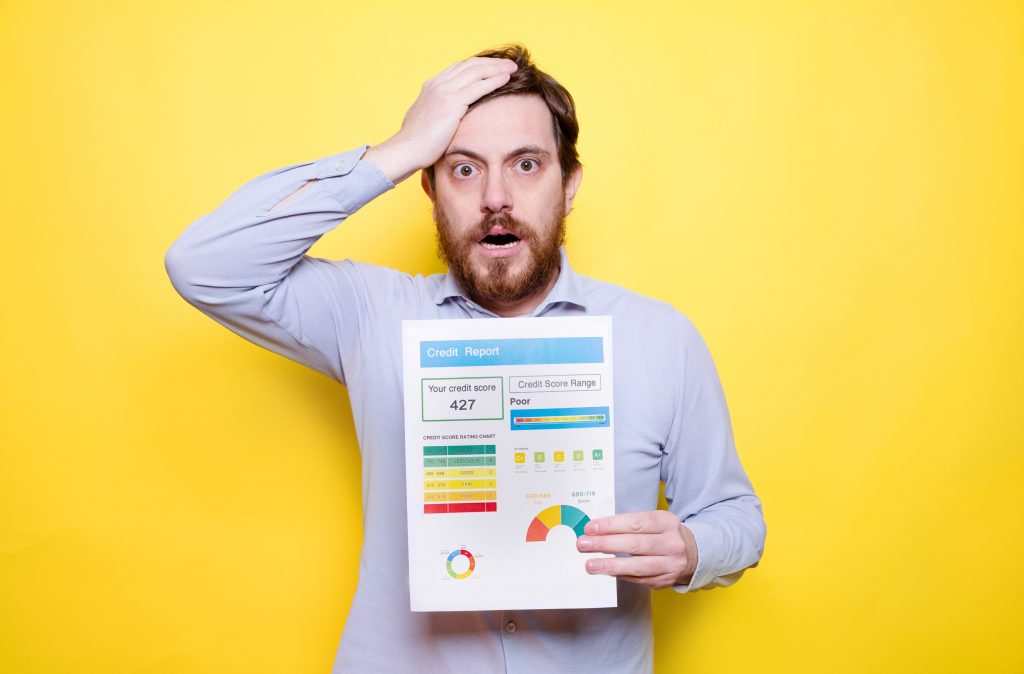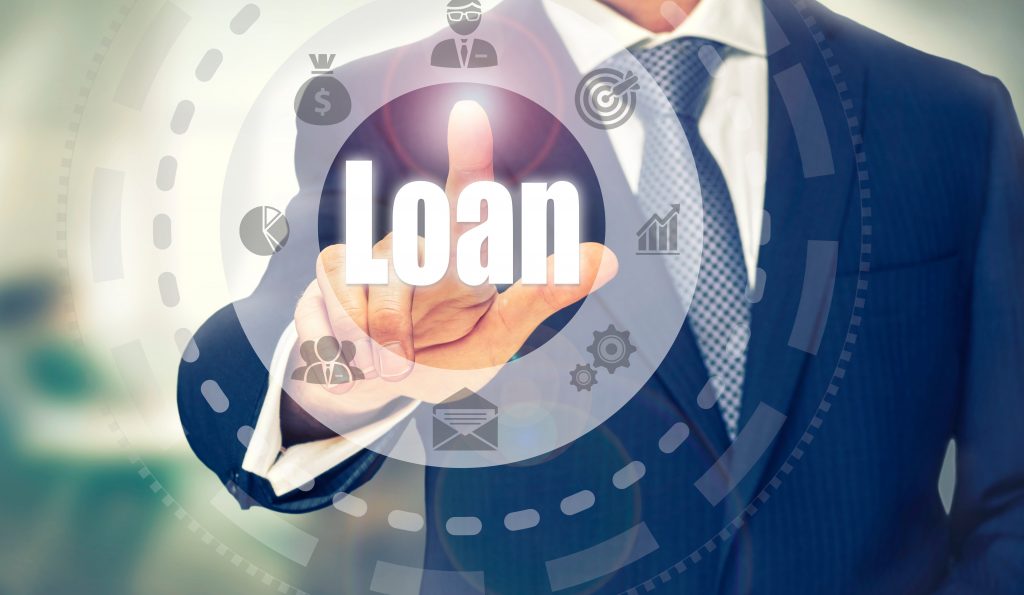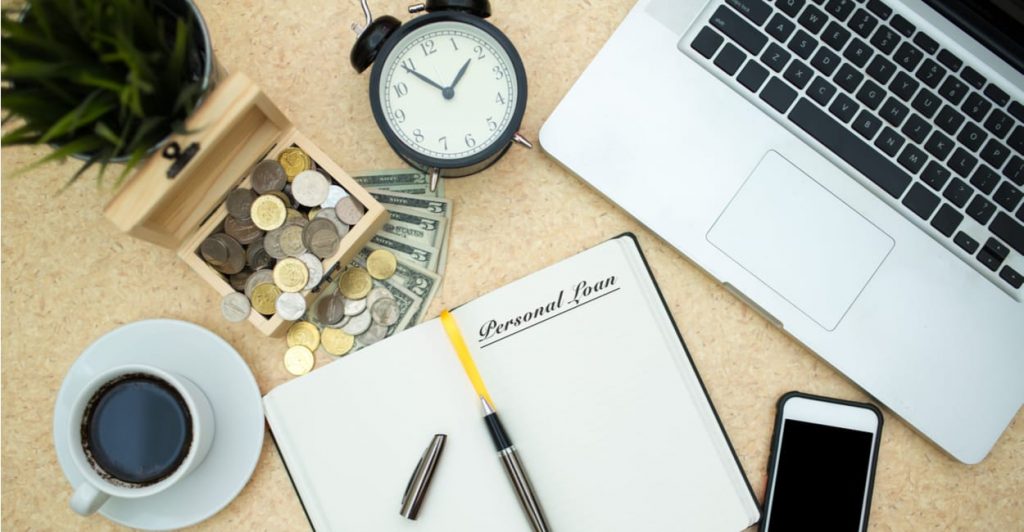Even with a low credit score, securing approval for a personal loan is still possible. Acquiring a personal loan can contribute positively to your credit score by diversifying your credit mix, but it’s crucial to ensure timely payments each month. Instances of late or missed payments can result in adverse entries on your credit report. With so many consumers in credit card debt, we are seeing many requests for unsecured personal loans for bad credit guaranteed to be approved. Most lenders will want to consider your credit before approving personal or payday loans. Our team can help you shop and compare personal loans for bad credit.
Can I Get a Personal Loan with Bad Credit?
If you’ve found yourself asking, “Can I get a personal loan with bad credit?” you’re in the right place. This guide aims to provide a comprehensive answer to this question while shedding light on the complexities of personal loans and credit scores.
- Fixed payment unsecured personal loans for low credit
- Consolidate debt and bad credit loans with a fixed rate loan
- Bad credit personal loans with guaranteed approvals from $5,000 to $50,000
- Shop direct lenders for bad credit personal loans
- Refinance high interest payday loans with lower fixed rates
Benefits of Debt Consolidation Loans for Bad Credit
If you have bad credit, you might find payday loans easier to obtain. However, payday loans are typically not the best option due to their high costs. Instead, consider personal loans for bad credit, which can be up to ten times cheaper than payday loans and provide up to $100,000. Debtinate can match you with lenders offering bad credit loans and traditional no credit check loans with guaranteed approval. Apply now and get an unsecured loan within minutes.
Save Money on Interest: By consolidating your debts under a loan with a lower interest rate, you’ll save money on interest. You can even apply these savings back to your debt to accelerate your payoff time and become debt-free faster.
Fixed Monthly Payments: Consolidate debt with bad credit loans that come with fixed payments, meaning you’ll owe the same amount each month, making it easier to budget.
Re-Build Credit: Reputable lenders report your payment history to the credit bureaus. Paying off your debt consolidation loan on time can help improve your credit score.
Attainable Goal: With a bad credit loan that has a set repayment term, you’ll know the exact date you’ll be debt-free, which can be highly motivating.
What is a Personal Loan?
Personal loans are a type of installment loan that is unsecured. Unlike credit cards, personal loans provide borrowers with a one-time cash payment. Borrowers then repay this amount, plus interest, in regular monthly installments over the loan’s term. Before we plunge into the heart of the matter, it’s crucial to establish a firm understanding of the precise concept of a unsecured loan.
How Personal Loans Work

Personal loans are a form of installment credit. Unlike a credit card, a personal loan delivers a one-time payment of cash to borrowers. Then, bad credit borrowers pay back that amount plus interest in regular, monthly installments over the lifetime of the loan, known as its term.
In the financial realm, a personal loan represents a certain type of credit that is ordinarily unsecured, signifying there’s no necessity for an asset to be pledged as collateral, a requirement typical of auto loans or mortgages. Finding an unsecured personal loan for bad credit guaranteed approval will be tricky in 2024, so let’s focus on reality. The provision of these unsecured loans hinges on an individual’s creditworthiness, a measure of their financial reliability and capacity to repay.
What is Bad Credit?

Now that we’ve unpacked the complexities of personal loans, it’s time to plunge into the intricacies of bad credit and its implications. There are bad credit lenders that offer personal loans so do not panic.
How Credit Scores Are Calculated
Credit scores are meticulously calculated by credit bureaus, whose algorithms consider an array of factors linked to your credit history. This includes your record of payment punctuality, the magnitude of your debt, the duration of your credit history, and the diversity of credit types you have managed.
Can You Get a Personal Loan with Bad Credit?

Indeed, it’s possible to secure a personal loan even with bad credit. However, it’s essential to understand that it comes with several aspects that you should be aware of:
- High-Interest Rates: Lenders typically view borrowers with bad credit as high-risk, and to compensate for this risk, they charge higher interest rates. This means that the total repayment cost of the loan can be significantly higher than if you had a better credit score. Check today’s personal loan rates.
- Limited Choices: The number of lenders willing to extend credit to individuals with poor credit history may be fewer. Therefore, you might find that your options could be much better, reducing your ability to shop around for the best terms.
- Stricter Loan Terms: Even when you manage to secure a personal loan with bad credit, the loan terms might be more rigid. For instance, you may face stricter penalties for late or missed payments.
- Secured Loans: Some lenders might only be willing to offer secured loans to individuals with poor credit. This means you’d need to provide collateral – such as your home or car – which the lender can seize if you fail to repay the bad credit loan.
- Loan Guarantors: In some cases, lenders may require you to have a guarantor to co-sign the bad credit loan. A guarantor is someone who agrees to repay the loan if you are unable to. This can be a significant commitment, and both parties must understand the responsibility.
- Shorter Repayment Periods: Loans given to people with poor credit often have shorter repayment periods. This is another strategy lenders use to minimize their risk. However, this could result in higher monthly payments, putting further financial pressure on the borrower.
Challenges Faced when Applying for a Personal Loan with Bad Credit
Though securing a personal installment loan with bad credit is within the realm of possibility, the available options might be considerably fewer and potentially fraught with steeper interest rates. This is largely due to the heightened risk perceived by lenders, thereby creating a more challenging landscape for potential borrowers.
Many homeowners choose a 2nd mortgage to consolidate bills with secure debt consolidation because the interest rates are usually lower and the lenders sometimes allow damaged credit. The RefiGuide explains the options pretty well, Read HELOC vs Home Equity Loan to get the details. Keep in mind there are usually origination fees and closing costs with home equity loans, but likely better interest rates as well,
Best Place to Get a Personal Loan with Bad Credit

Having bad credit means you’re still in options. There are still places where you can get a personal installment loan, including:
- Credit Unions: These non-profit financial institutions are typically more understanding and flexible regarding members with less-than-stellar credit. Credit unions consider the borrower’s financial picture—not just the credit score—when making lending decisions.
- Online Lenders: Online lending platforms can be an accessible and quick option for those with low credit scores. These lenders often utilize different criteria than traditional lenders, making approval more likely. However, please diligently review their terms and conditions, as interest rates can sometimes be higher.
- Peer-to-Peer Lenders: These platforms allow you to borrow directly from an individual rather than an institution. The lending decision might be based on more than just your credit score, but be cautious as these loans can sometimes come with higher interest rates.
- Secured Loans: These loans are backed by your own collateral, such as your car or home. Although riskier (as you can lose the collateral if you can’t pay), these loans are typically easier to get because they pose less risk to the lender.
- Family or Friends: This option can be the most flexible, as terms of the loan can be worked out personally and might not involve interest. However, it’s crucial to remember that unpaid loans can result in damaged relationships.
- Payday Alternative Loans (PALs): Some credit unions offer these small, short-term loans to borrowers, which can be an affordable alternative to high-cost payday loans. Be aware, though; these usually require credit union membership.
Criteria for Choosing the Best Place
There are several factors to consider when choosing where to apply for a personal loan with bad credit, such as the following:
- Interest Rates Offered: A major factor to consider is the interest rate different lenders offer. This will directly affect the total cost of the loan and the monthly repayments. Look for a lender offering the most favorable and manageable rates.
- Terms and Conditions: Every loan comes with its own terms and conditions. These may cover areas such as the loan duration, repayment schedule, early repayment penalties, and fees for late payments. Reading and understanding these conditions is important before agreeing to a loan.
- Lender Reputation: The lender’s reputation is a crucial factor in your decision. Look for lenders known for their transparency, good customer service, and fairness in dealing with clients. Researching online reviews and ratings can be an effective way to gauge this.
- Approval Criteria: Different lenders may have different criteria for approving a loan application, particularly those with credit. It’s important to find a lender whose criteria you meet to avoid potential disappointment and a hit to your credit score from a rejected application.
- Loan Flexibility: The ability to modify the loan terms, such as being able to extend the loan period or adjust repayment amounts, can be very helpful, particularly if your financial situation changes during the loan term.
A List of Recommended Places to Find Bad Credit Loans
Some of the best places to get a personal loan with bad credit include online lenders, credit unions, and certain banks.
- Online Lenders: The digital world has led to many online lending platforms. These lenders often utilize cutting-edge algorithms to evaluate creditworthiness, making them more open to lending to individuals with damaged credit scores. With quick approval times and user-friendly interfaces, they are an increasingly popular choice for those seeking loans with less-than-stellar credit.
- Credit Unions: Credit unions are non-profit financial institutions owned by their members, often fostering a sense of community and personal attention. They generally offer favorable interest rates and are known for their more flexible lending criteria, making them a viable option for those struggling with poor credit. Note, however, that you typically need to be a member of a credit union to access its services.
- Certain Banks: Some traditional banks, particularly those with which you have an existing relationship, may be willing to overlook a less-than-perfect credit score in the interest of customer loyalty. These banks may offer personal loans with reasonable terms, especially if you’ve demonstrated responsible financial behavior with them. When considering a personal loan, it’s always worth checking with your bank first.
How to Apply for a Personal Loan with Bad Credit

Despite the hurdles posed by bad credit, the process of applying for a personal loan can be quite manageable if you are well-prepared and armed with the right information. Here are some key steps to guide you through the journey:
- Understand Your Credit Score: The first and foremost step is to understand your credit score and how it has been calculated. Knowing your credit score and what it represents will give you a better sense of your standing in the eyes of potential lenders.
- Research Lenders: Different lenders have different eligibility criteria, and some are more lenient towards individuals with damaged credit. Do your homework and identify which lenders will likely consider your application despite your low credit score.
- Consider Secured Loans: Secured loans require you to offer an asset, such as a car or house, as collateral. These loans may be easier to obtain because they present less risk to the lender.
- Assess Loan Terms: Ensure you can afford the loan you are considering. Before deciding, consider the interest rate, the repayment schedule, and any potential fees.
- Prepare Your Documentation: Gather all necessary documents, including proof of identity, proof of income, and any other financial statements that a lender may require. These could include bank statements, pay slips, tax returns, and more.
- Submit Your Application: Once you’ve completed all the previous steps, it’s time to submit your application. Be prepared to wait for a response, as approval times can vary depending on the lender.
- Seek Professional Advice: If you’re uncertain or struggling to navigate the loan application process, consider seeking help from a financial adviser. They can provide tailored advice based on your financial situation.
Step-by-Step Guide for Bad Credit Personal Loans
The application process typically involves providing personal information, including your social security number and proof of income, and submitting a credit check.
- Providing Personal Information: The first step in the application process is submitting your details. This includes your social security number, uniquely identifying you, and is vital for various legal and financial matters.
- Submitting Proof of Income: The next crucial element is evidence of your income. This typically involves furnishing recent paystubs, bank statements, or tax returns to confirm your financial capability to repay the loan.
- Undergoing a Credit Check: The final hurdle is the credit check. Here, your credit history is scrutinized to determine your creditworthiness and ascertain the risk associated with lending to you. Your past behaviors regarding debt repayment play a significant role in influencing the outcome of this assessment.
Tips to Improve Success Rate
Consider improving your credit score before applying, reducing your debt-to-income ratio, and demonstrating a stable income.
- Enhance Your Credit Score: Endeavor to ameliorate your credit score before submitting your application for a loan. This can be achieved by maintaining regular and punctual payments on all your outstanding debts, reducing your credit card balances, and promptly rectifying any errors on your credit report. An improved credit score signifies lower risk to lenders, which can enhance your chances of loan approval.
- Diminish Your Debt-to-Income Ratio: Aim to lower your debt-to-income (DTI) ratio – a metric that lenders use to gauge your ability to manage monthly payments and repay debts. A lower DTI ratio demonstrates that you have a balance between your earnings and the debts you owe, which is a favorable indicator to lenders.
- Establish a Stable Income: Evidence of a steady, reliable income can substantially bolster your loan application. Lenders are more inclined to approve applicants who can earn consistently and consequently make regular loan repayments. This could mean presenting pay stubs, tax returns, or employer letters to corroborate your income stability.
Alternatives to Personal Loans for Bad Credit Borrowers
Navigating the financial world with a tarnished credit score can pose a significant hurdle, particularly when attempting to secure a personal loan. However, numerous alternative solutions can pave the way for you to obtain the necessary funds, despite the credit challenges.
- Credit Builder Loans: A credit builder loan is a viable choice worth exploring. This type of loan provides the unique advantage of allowing you to borrow a modest sum, which the lender retains in an account until all your payments have been fulfilled. It serves as an excellent mechanism for demonstrating your commitment and ability to make regular payments, thereby helping to boost your credit score.
- Secured Loans: If you own valuable assets, such as a vehicle or a house, secured loans present another feasible option. These types of loans mandate collateral, thus providing the lender with a sense of security and allowing you to borrow despite your low credit scores.
- Payday Loans: Payday loans exist as a possible solution; however, they should ideally be viewed as a last-ditch measure. This is due to their exorbitant interest rates and hefty fees, which can create a more significant financial burden in the long run.
How to Improve Your Credit Score for Future Loans
Boosting your credit score becomes pivotal to amplifying your eligibility for future loan approvals. An improved credit score unlocks opportunities for more favorable loan terms and conditions.
Strategies for Repairing Bad Credit
Numerous strategies for repairing bad credit include:
- Punctual Bill Payments: Consistently making timely payments is one of the most effective strategies to repair your credit score. Late payments can significantly harm your credit score, whereas timely payments can help boost it. Set up payment reminders or automate your bill payments to ensure punctuality.
- Reducing Outstanding Debts: Your debt level significantly impacts your credit score. Strive to pay off outstanding balances on your credit cards and reduce the amount of debt you owe. This can include managing your credit usage and creating a realistic budget and payment plan.
- Regular Credit Report Checks: Regularly checking your credit report is essential for keeping track of your credit score and identifying any inaccuracies or fraudulent activities. Credit bureaus can sometimes make errors, which can unfairly harm your credit score. If you notice any inaccuracies, immediately report them to the credit bureau for correction.
- Increasing Your Credit Limit: If possible, you may want to request an increase in your credit limit. This will decrease your credit utilization ratio (the percentage of your available credit that you’re using), which can improve your credit score. Just make sure to keep your spending the same along with your limit!
- Avoiding New Debt: Avoid taking on new debts or applying for unnecessary credit. New credit applications can result in hard inquiries, lowering your credit score.
- Maintaining Older Credit Accounts: The age of your credit accounts can impact your credit score. Older accounts show lenders that you have a long history of managing credit. Therefore, keep your older credit accounts open, even if you’re not using them.
- Diversifying Your Credit: Having different types of credit (like a car loan, credit card, and mortgage) can improve your credit score. This shows lenders that you can handle various types of credit responsibilities.
Importance of Maintaining Good Credit
Sustaining a strong credit score is paramount, as it not only facilitates securing loans with greater ease but also empowers you to avail of loans with reduced interest rates. This can significantly ease your financial burden while increasing your borrowing capacity in the long run.
Common Misconceptions about Personal Loans with Bad Credit
There are several misconceptions surrounding personal loans with bad credit.
- Everyone with Bad Credit is Declined for Personal Loans: Many people believe that having bad credit is an automatic disqualification when applying for unsecured personal loans. However, this is only sometimes true. Some lenders specialize in loans for individuals with poor credit. Though the interest rates may be higher, being approved is still possible.
- Personal Loans with Bad Credit Always Have Exorbitant Interest Rates: While it’s true that loans for individuals with limited credit typically come with higher interest rates, the rates can vary significantly. Different lenders offer different terms, so it’s always wise to shop around and compare offers.
- Only Banks Offer Personal Loans: Some might think that only banks provide unsecured personal loans, but this isn’t true. Credit unions, online lenders, and peer-to-peer lending platforms also offer personal loans, sometimes with better terms than traditional banks, even for individuals with bad credit.
- Bad Credit Scores Can’t be Improved: Another common misconception is that it’s impossible to improve once you have a bad credit score. However, you can rebuild your credit score with consistent effort, responsible financial habits, and time.
- Personal Loans Are the Only Option for People with Bad Credit: This is a common misconception as there are various types of credit products available for individuals with bad credit, such as secured credit cards, home equity loans, and even certain types of auto loans.
- Personal Loans with Bad Credit Require a Guarantor: Some people believe that all personal loans for those with bad credit require a guarantor or co-signer. While some might, it’s not a universal requirement. There are bad credit loans available that do not necessitate a guarantor.
The Risks of Personal Loans with Bad Credit
Obtaining personal loans with a tarnished credit history can offer a quick financial solution, but it also comes with substantial risks. Below are some key potential pitfalls associated with such loans:
- Exorbitant Interest Rates: With a poor credit score, lenders view you as a high-risk borrower. To compensate for this risk, they tend to levy higher interest rates. This means you’ll end up paying significantly more over the loan life compared to someone with a strong credit score.
- Rigid Terms and Conditions: Another disadvantage is the strict terms and conditions often accompanying loans for individuals with bad credit. This might include strict repayment schedules, hefty penalties for late or missed payments, and limited flexibility in modifying the loan terms.
- Risk of a Debt Spiral: This is one of the most severe risks. If a loan isn’t managed carefully, it can lead you into a downward debt spiral. For example, if you need help to meet the high monthly repayments due to the steep interest rates, you may need to take out additional loans to keep up. This scenario can quickly lead to an unmanageable amount of debt.
- Collateral Risk: Sometimes, lenders might require you to secure the loan with collateral – an asset like your home or car. If you fail to repay the loan, you could lose this asset.
- Impact on Credit Score: Failing to repay a high-risk unsecured loan could further damage your credit score. A lower credit score makes it even more challenging to obtain affordable financial products in the future, creating a vicious cycle of bad credit.
Points to Remember About Personal Loans for Bad Credit
In conclusion, while getting a personal loan with bad credit might be challenging, it’s not impossible. This journey requires strategic foresight, extensive research, and a persistent dedication to nurturing healthier credit habits. Painstakingly navigating this path enhances the likelihood of successfully securing a loan.
When considering a no credit check loan, it’s crucial to understand the application process. While specific requirements and steps may vary slightly between lenders, the general no-credit check loan process is typically straightforward and consistent across different types of loans.
We can help you find the best lender for no credit check loans. We welcome bad credit borrowers to find unsecured bad credit loans with guaranteed approval. However, obtaining a same-day emergency loan can be risky depending on the lender you choose. Be sure to thoroughly research the specific bad credit short-term loans you’re considering.
Moreover, the reward doesn’t stop there, as this journey can ultimately lead to the restoration and rehabilitation of your tarnished credit score in the longer term. Please contact us to speak to a professional about your situation.
FAQs
Is it possible to get a personal loan with bad credit?
Yes, securing a personal loan is possible despite having a less-than-ideal credit score. However, lenders might offset their risk by charging higher interest rates.
Where is the best place to get a personal loan with bad credit?
If you want to secure a personal loan while dealing with bad credit, online lending platforms, community-based credit unions, and some traditional banks can often offer more favorable terms and conditions.
How can I improve my chances of getting a personal loan with bad credit?
To boost your chances of loan approval despite a bad credit rating, focus on improving your credit score, managing your debts wisely to decrease your debt-to-income ratio, and maintaining a reliable and consistent income source.
What are some alternatives to personal loans for those with bad credit?
If obtaining a personal loan proves challenging due to poor credit, consider looking into other financing avenues, such as credit builders and secured loans. Payday loans are another option, but due to their high-interest rates and potential for creating a debt cycle, they should be considered only as a last resort.
How can I improve my credit score for future loans?
The road to a healthier credit score involves consistent on-time bill payments, effective debt management, and regular credit report checks to catch and correct any inaccuracies. These steps can significantly elevate your credit score, making future loan applications more straightforward.
